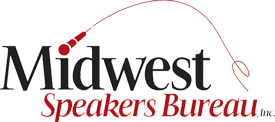The National Speakers Association just released a white paper on “How an Emcee Adds to Your Meeting.”
This is a great guide to understand the different types of emcees, the needed skills, what they should do before, during, and after an event on behalf of the meeting organizer, the other speakers, and the audience.
Here’s a quick checklist to use when you’re hiring an emcee –
- Write a request for proposal. Provide a brief description of your audience and agenda. Add any additional information that will impact the emcee’s responsibilities.
- Assemble a list of potential candidates. Your best place to start – contact the National Speakers Association for ideas.
- Check credentials and verify references. Get a list of similar events they have worked for as an emcee. If possible, watch a recorded event where they were the emcee.
- Ask questions and trust your intuition. Ask candidates about how they would handle certain situations that may arise in your event. What does your “gut” say about this person? If your intuition and your analysis are aligned, the odds of picking a successful candidate go up.
There are several different types of emcees. The skillset you need depends on the type of emcee you are hiring. Here’s a rundown of the seven types of emcees you may have the need to hire or may want to pursue as a career path:
Master of Ceremonies. They introduce the main segments of the gala or awards program and navigate through the schedule. They let their personality shine and highlight the expertise and eloquence of the guests.
Entertainer Emcee. These people are first and foremost performers. Their specialty is entertaining the audience between repetitive formats. They are flexible enough to fill in five-minute gaps or launch into a half-hour routine.
Humorist Emcee. These folks not only tell jokes, but they provide humorous commentary on the meeting, organization, or even the industry. They are adept at recapping sessions and bringing out themes at the event.
Conference Emcees and Moderators. These emcees go beyond the traditional role and act as coordinators and moderators of various event components, such as panel discussions and Q&A sessions. They often synthesize content presented by professional speakers and represent it to the audience.
Conference Content Weaver. They act as a conduit between the audience and the speakers, connecting the dots and discussing the audience’s overarching issues. They open and close sessions, but they also ask provocative questions and frame the context of the conference’s learning opportunities.
Event Facilitators. Their focus is on creating a structure that supports the audience experience. In collaborative events, they work to achieve their client’s goals and are most often employed at corporate retreats, Board meetings, and annual conferences.
Virtual Emcee. As we all know, virtual events became the norm in 2020 are still prevalent in 2021 (and likely beyond). The Virtual Emcee has even more responsibilities than the in-person emcee. On the top of that list is making everyone participating remotely feel like they are together in the same room. They need to be adept at using audience response systems, have camera skills, production talent, and know their way around a virtual environment.
For the full report, please visit www.nsaspeaker.org/emcee.

